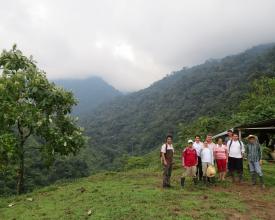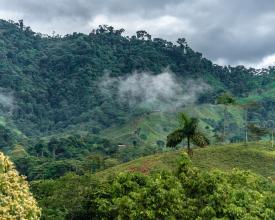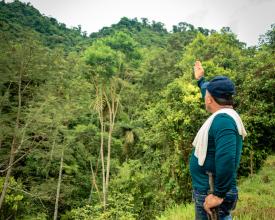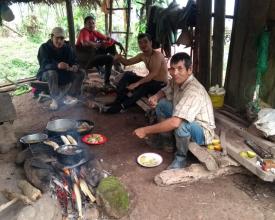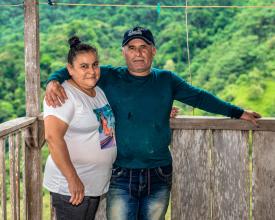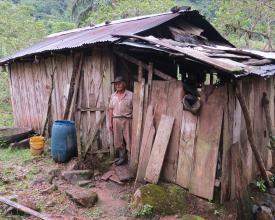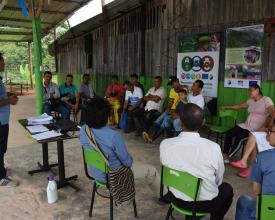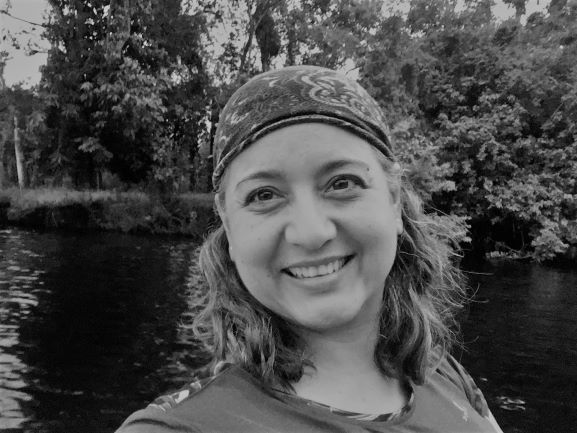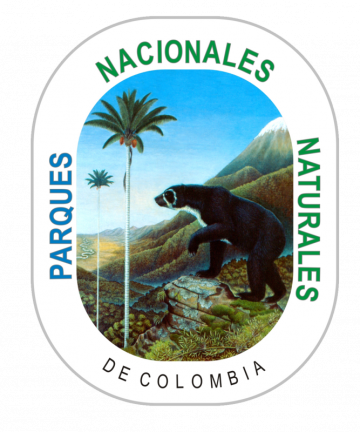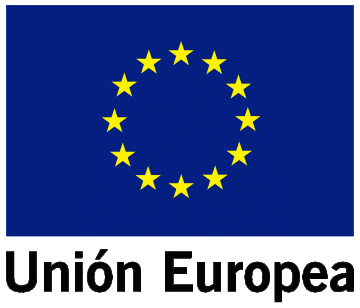
Construction of a strategy to resolve the situations of use, occupation and tenure in the Alto Fragua Indi Wasi National Natural Park.
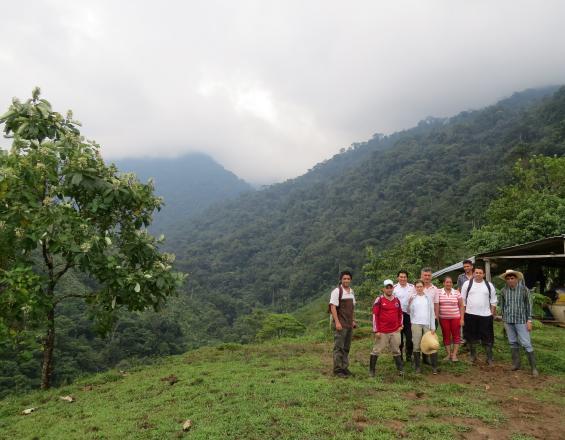
More than 60% of the areas that make up the Colombian National Natural Park System present conflicts with the peasant communities due to unpermitted land use, which generates problems of occupation and tenure, which in turn causes transformation in the ecosystems. The Alto Fragua Indi Wasi National Natural Park is no stranger to this problem, therefore, since 2005 to date, it has worked with the local communities that live in its interior in order to achieve a strategy that aims to strengthen its governance and management scheme to resolve the situations of use, occupation and tenure. Thus, exercises such as the socioeconomic characterization of the families living in the protected area, the organization of community action boards and the signing of 127 transitory agreements have been some of the actions that have contributed to this solution.
Context
Challenges addressed
- Management of pressures on the nature of the Protected Area taking into account the context of the people living within it.
- Implementation of prioritized management strategies in a context where armed conflict and illegal crops are present.
- Generate mechanisms to stop the illegal and informal purchase and sale of land.
Environmental challenges
- Prevent and control the impact on the state of the values under conservation due to the presence of pressures derived from the use and occupation of the protected area.
- Generate biodiversity restoration and recovery strategies.
Economic challenges
- Management of economic alternatives for rural communities, in line with ecosystem protection and conservation.
- Management of financial mechanisms other than state investment to achieve the protected area's conservation objectives.
Location
Process
Summary of the process
In order to mitigate this problem and strengthen its governance and land planning actions, since 2005, AFIW National Park has developed a socioeconomic characterization of the families that are related to the PA, thus identifying the status of the use and tenure situation within it. Parallel to this action, progress is being made in strengthening the organizational capacity of the community action boards. Thanks to these efforts, in coordination with the peasant communities, 127 transitory agreements for Participative Ecological Restoration were signed, with the purpose of preserving the integrity of the AFIW PNN through the liberation of transformed areas by means of restoration, rehabilitation, recovery, sustainable use and conservation processes.
Building Blocks
Socioeconomic characterization of the families.
With the socioeconomic characterization of the families, the status of the use and tenure situation within the PA has been identified, which in turn has allowed the PNN to orient its governance and land planning actions. In turn, this has allowed the PNN to orient its governance and land planning actions. In order to achieve the socioeconomic characterization of the farming families, several activities were carried out, which are described below.
Surveys to obtain primary information on the following variables:
Population according to gender and age.
Family composition
Educational level by gender
Occupation by gender
Health.
Access to state programs.
Housing characteristics.
Basic sanitation.
Accessibility: access roads, means of transportation and travel time.
Identification of production systems.
Field visits: Visit to the farms and verification of the information provided in the surveys. Also, georeferencing of the boundaries and land use of the property, water intake where the water is taken for family consumption and the site of the house were carried out.
Use of Geographic Information Systems: Aimed at processing the information collected in the field and in turn generate maps with the polygons of the farms and the location of the families.
Enabling factors
- Funding from the European Union, WWF, ACT and other projects such as: Conservation of the Biodiversity of the Colombian Massif, Strengthening of Community Autonomy around Life, Territory, Environment, in Amazonian sub-regions, Moore Foundation Piedemonte Andino Amazónico, Conservation actions in 8 National Parks in the area of influence of the Colombian Massif.
- Availability of GIS
- Recognition of the existence of a PA by the rural communities and willingness of the inhabitants to provide information.
Lesson learned
- Strengthening of the trust process with the farming families, in which the park team, through constant rapprochement and implementation of different exercises and actions, is able to maintain and improve a relationship of familiarity and closeness, which they have been working on for some time.
- The PNN technical team has acquired expertise in conducting this type of socio-economic characterization.
Strengthening of organizational capacity.
Create spaces of trust between peasant leaders and the PNN by addressing issues prioritized by them, in order to strengthen their organizational capacity.
To achieve this process, the following activities were carried out:
- Identification of key actors and Community Action Boards.
- Diagnosis on the organization and participation (it allowed to analyze the roots of the communal processes, their strengths and weaknesses).
- Analysis of projects being developed in the area to identify initiatives that could leverage PA management in addressing the situation of use, occupation and tenure.
- Design and execution of the cross-cutting agenda for training and capacity building of community leaders. The topics covered were the following: Colombian environmental regulations, conflict management and resolution, mechanisms for citizen and community participation, peace agreements between the FARC-EP and the Government, land use planning with emphasis on Peasant Reserve Zones, project formulation and management, associativity and cooperativism.
- Generation of meetings between local and regional peasant organizations as a strategy for the exchange of experiences.
Enabling factors
- Available funding sources such as budgetary support from the European Union.
- Acknowledgement by the farming communities regarding the existence of a protection figure and willingness of key stakeholders to receive training.
Lesson learned
- Community training exercises on Colombian environmental regulations need to be strengthened.
- Strengthening of community organizations in organizational and technical aspects.
- Support organizations in identifying institutional or private initiatives that can support local processes in this area.
- Take into account the ecotourism approach in the buffer zone as an economic alternative.
- Stimulate the strengthening of the Environmental Committees of the Community Action Boards located in the Buffer Zone and linked to social control exercises for conservation.
Signing of transitional agreements for Participatory Ecological Restoration (REP)
The agreements are made in order to preserve the integrity of AFIW National Park through the liberation of transformed areas through restoration, rehabilitation, recovery, sustainable use and conservation processes.
The following methodological route was developed for this process:
- Socialization of the strategy and the Local Sustainable Development program of the European Union.
- Work plan agreement.
- Field day and survey of property information.
- Socialization of the results and selection of beneficiaries.
- Workshops on the content and scope of the agreement and construction of the portfolio of alternatives.
- Signing of the REP agreements was framed within the procedures established by the National Natural Parks within the guidelines of Participatory Ecological Restoration and the strategy of Use, Occupation and Tenure.
- Process of acquisition and delivery of inputs and materials for good living.
- Follow-up and monitoring of REP agreements.
Enabling factors
- Available funding sources such as budgetary support from the European Union.
- Willingness of key stakeholders to sign transitional agreements for Participatory Ecological Restoration.
Lesson learned
As a contribution to land use planning and conservation objectives of the protected area, workshops were held to socialize and agree with the prioritized families on a land planning proposal that would contribute to improving their living conditions without altering the natural dynamics of the ecosystems. These workshops considered information corresponding to the PA zoning and its permitted activities, taking into account that the zoning process is proposed by the PA as a proposal presented to them. Based on the above, PA management was identified as a process that should be carried out jointly with the stakeholders involved in the search for sustainable improvement of their production systems.
Impacts
- Characterization of the socioeconomic status of 127 families that are partially or totally inhabiting the AFIW PNN in the framework of the use, occupation and tenure situation.
- Socialization and appropriation of the conservation figure by local communities.
- Strengthening of the organizational capacity of 16 community action boards, increasing their leadership capacity for territorial governance.
- Strengthening of the trust process between the park team and the 127 families related to the protected area; the result of the rapprochement and the actions carried out, which allowed the valuation and recognition of the importance of the park by the peasant community in the development of their livelihoods.
- Signing of 127 transitory agreements of Participative Ecological Restoration, which have the purpose of preserving the integrity of the AFIW PNN through the liberation of transformed areas by means of restoration, rehabilitation, recovery, sustainable use and conservation processes; these actions have contributed to the management of the properties and the protected area.
Beneficiaries
127 farming families settled in the AFIW, in the municipalities of San José del Fragua and Belén de los Andaquíes. There are 199 people living within the PA; men represent 55% of the population and women 44%.
Sustainable Development Goals
Story
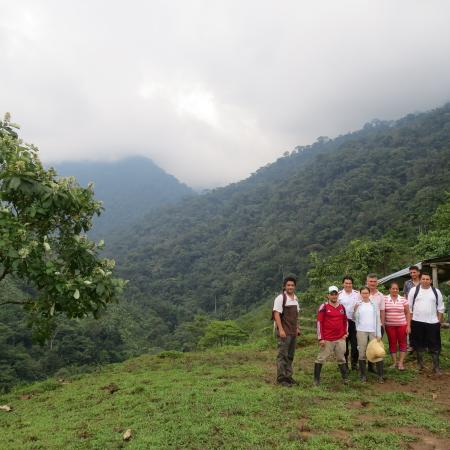
The Alto Fragua Indi Wasi National Natural Park (AFIW) covers an area of 76,699 hectares and is in a good state of conservation, with important endemic species, an excellent supply of environmental services, and contributes to the protection of Andean-Amazonian ecosystems. The area overlaps with the ancestral territory of the Ingano people and the Nasa de la Esperanza reservation.
In order to contribute to the management of this protected area, Colombia's National Natural Parks and AFIW National Park initiated the implementation of different activities through the "Budgetary Support for Sustainable Local Development - For Peace Building" financed by the European Union. With this financial support, the process of socioeconomic characterization of the families living in the PNN was consolidated and possible management measures for both the protected area and the Colombian National Parks System were identified, contributing to the construction of a strategy to resolve the situations of occupation and tenure use. This process was also replicated in the buffer zone of the AFIW PNN in the implementation of participatory land planning processes with strategic allies.
From 2016 to 2019, 127 transitory agreements for participatory ecological restoration and conservation were signed with the peasant communities related to the protected area, which were carried out in order to preserve the integrity of the Park through the release of transformed areas by means of restoration, rehabilitation, recovery, sustainable use and conservation zones. These agreements have been strengthened through the articulation with projects and programs of strategic allies, for reinvestment in activities aimed at strengthening the good living, food security and welfare of farming families. The activities carried out are framed within the social, environmental and productive components in actions such as: basic sanitation, housing improvement, alternative energies and productive systems (improvement of agricultural and livestock infrastructure, livestock reconversion, livestock aqueduct and minor species).

